Hallucinationsaccording to TCM
Symptom family: Mental Health Disorders
Root Causes of Hallucinations in TCM
Explore below more details about what might cause Hallucinations according to TCM.
- By Syndrome
- By Organ
- Blood Stasis
- Heart
Blood Stasis
Blood Stasis in TCM is a concept where the blood flow in the body is not as smooth or efficient as it should be. Imagine a river that's supposed to flow freely, but instead, it's getting blocked or moving too slowly in some parts. This can lead to various health issues, like pain that feels sharp or stabbing, dark bruises, and a complexion that looks purplish. TCM believes that good health relies on the smooth and vibrant flow of Qi and blood throughout the body, so when blood gets stuck, it's like a traffic jam in your body, leading to discomfort or health problems.... see more
Blood Stasis Patterns That Can Lead to Hallucinations
| Pattern Name | Relevant Symptoms | Relevant Formulas |
|---|---|---|
| Heart Blood Stagnation | Hallucinations, Stabbing chest pain, Chest constriction, Feeling of oppression of the chest | Xiao Tiao Jing Tang |
Heart
In TCM the Heart is considered the "emperor" of all organs, primarily responsible for governing Blood and housing the mind, known as "Shen." It plays a crucial role in maintaining mental-emotional equilibrium and controlling the circulation of Qi and blood throughout the body. When the Heart is imbalanced or malfunctions in TCM, it can lead to a range of issues like heart palpitations, insomnia, dream-disturbed sleep, anxiety, and a flushed complexion. Emotional disturbances such as excessive joy or lack of joy are also seen as signs of Heart disharmony. These symptoms reflect not just physical heart conditions but also the state of one's Shen, indicating the interconnectedness of physical and emotional well-being in TCM.... see more
Heart Patterns That Can Lead to Hallucinations
| Pattern Name | Relevant Symptoms | Relevant Formulas |
|---|---|---|
| Heart Blood Stagnation | Hallucinations, Stabbing chest pain, Chest constriction, Feeling of oppression of the chest | Xiao Tiao Jing Tang |
TCM Herbal Formulas for Hallucinations
Explore below some TCM herbal formulas used to address hallucinations, organized by cause and by formula type.
- By Cause
- By Formula Type
- Blood Stasis
- Formulas that regulate blood
- Formulas that sedate and calm the mind
Top Formula for Blood Stasis:
Xiao Tiao Jing Tang
Suitable for Blood Stasis patterns that may cause hallucinations, such as Heart Blood Stagnation
Learn moreFormulas that regulate Blood
These formulas are suitable for some hallucinations-causing patterns like Heart Blood Stagnation.
One such formula is Xiao Tiao Jing Tang, with white peony root as a key herb.
Formulas that sedate and calm the Mind
Hallucinations can be treated by these formulas when it stems from an agitated or disturbed mental state, requiring calming and mind-stabilizing actions.
One such formula is Ci Zhu Wan, with magnetite as a key herb.
Acupoints for Hallucinations
Explore below some acupoints used to address hallucinations, organized by meridian.
- By Meridian
- Stomach Channel
- Bladder Channel
- Large Intestine Channel
- Pericardium Channel
- Governing Vessel
- Small Intestine Channel
- Lung Channel
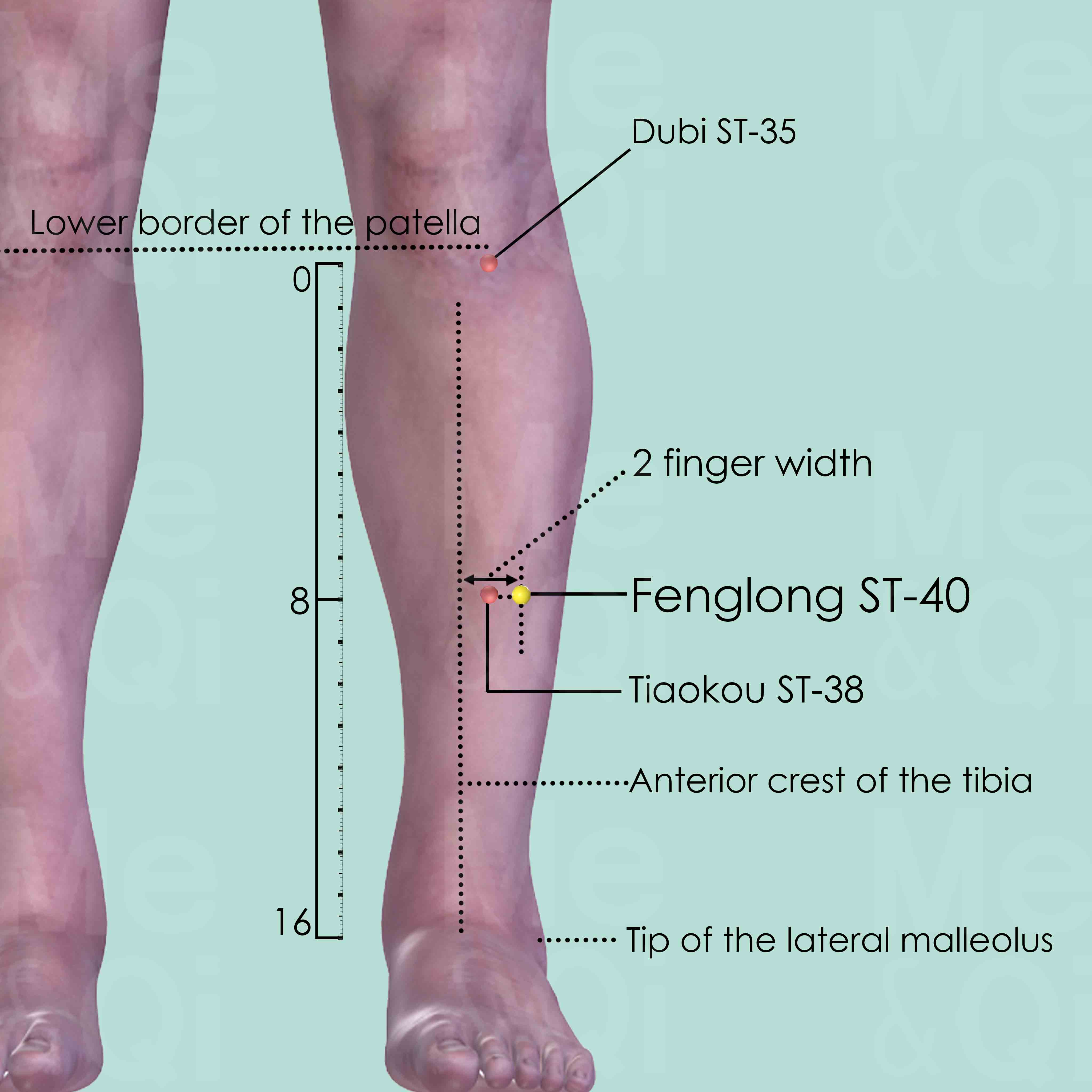
Fenglong ST-40
Midway between Dubi ST-35 and Jiexi ST-41, two middle finger-width from the anterior crest of the tibia, or one middle finger-width from Tiaokou ST-38.
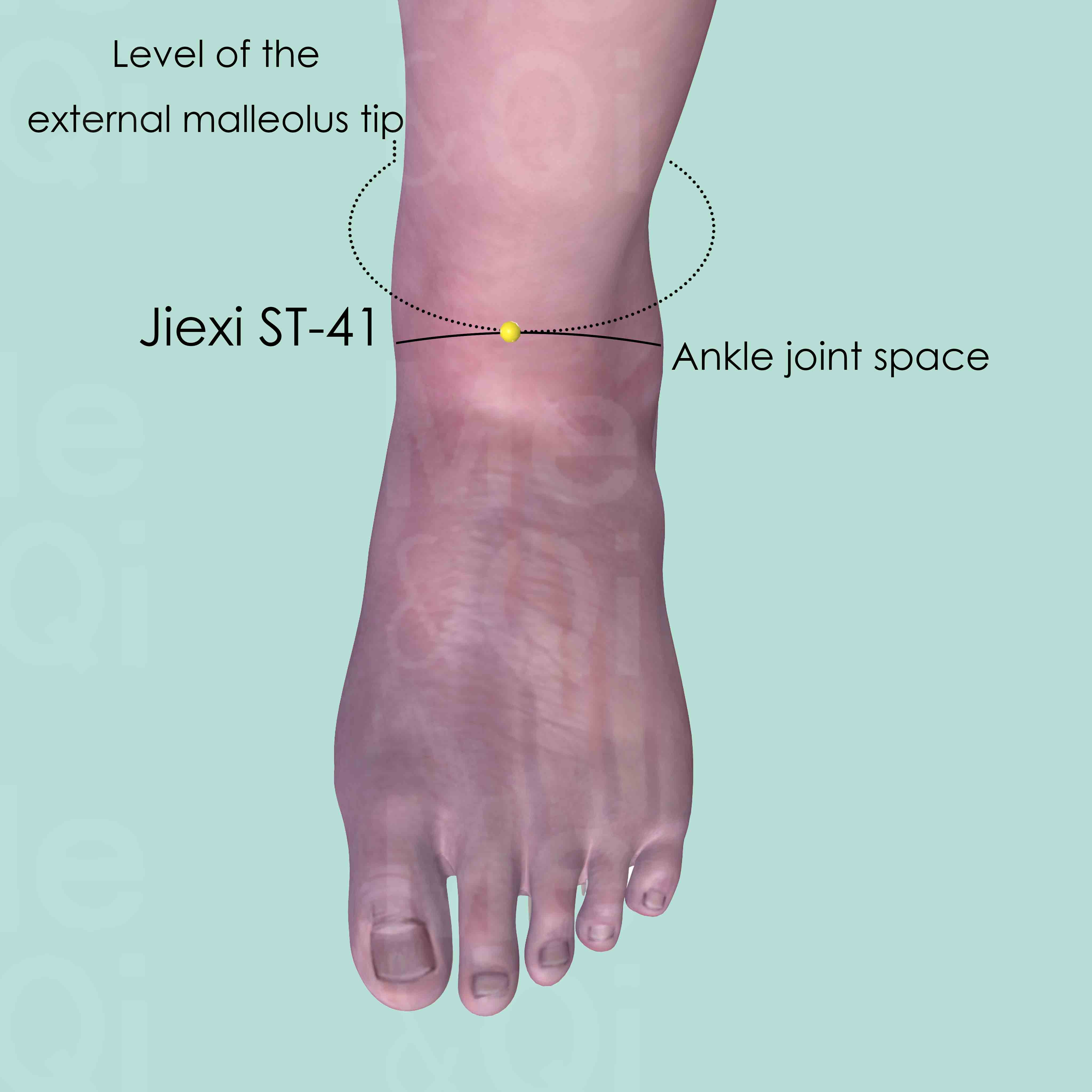
Jiexi ST-41
At the junction of the dorsum of the foot and leg, between the tendons of extensor digitorum and the extensor hallucis longus muscle. Approximately at the level of the tip of the external malleolus.
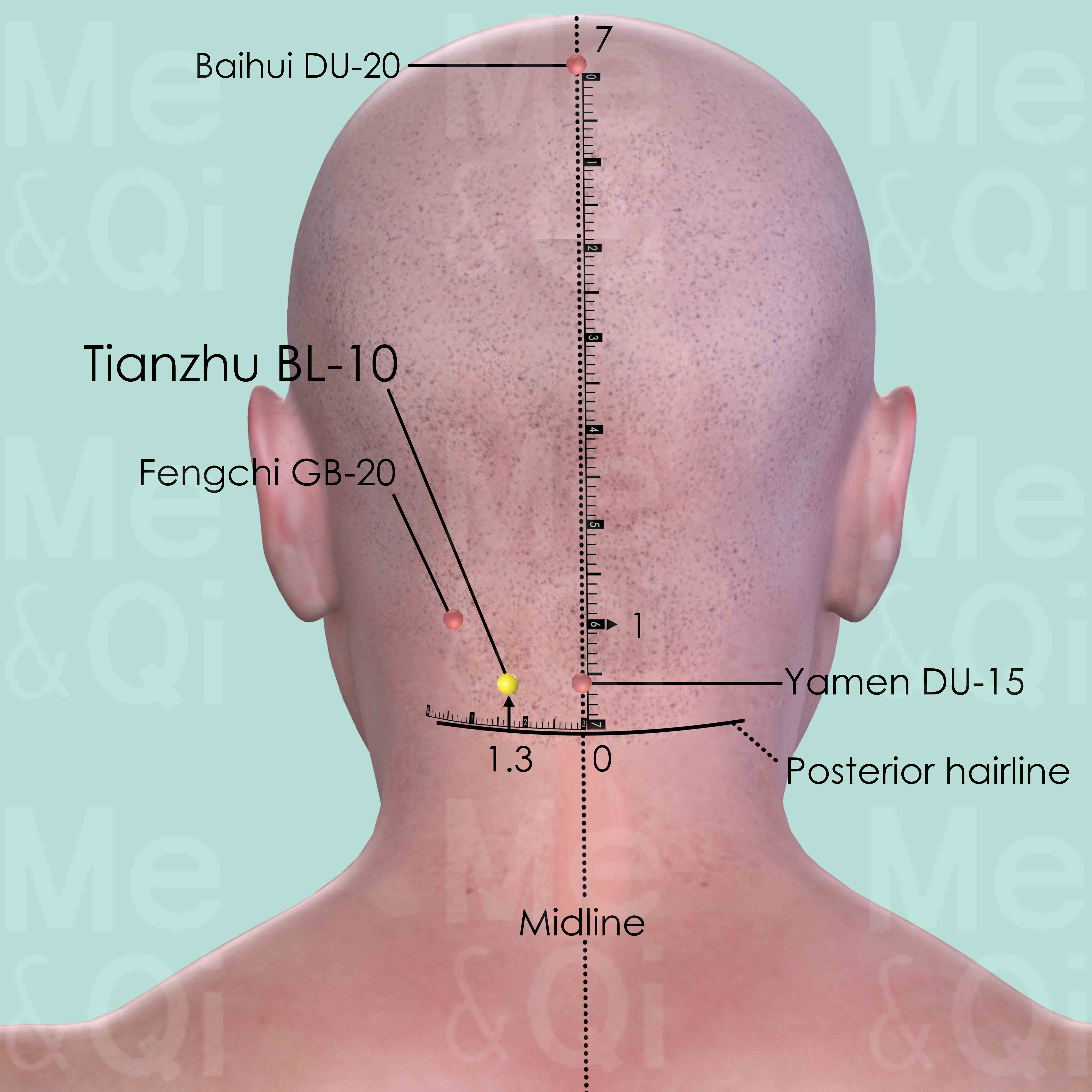
Tianzhu BL-10
1.3 cun lateral to Yamen DU-15 on the posterior midline, 0.5 cun above the posterior hairline, on the lateral side of trapezius muscle.
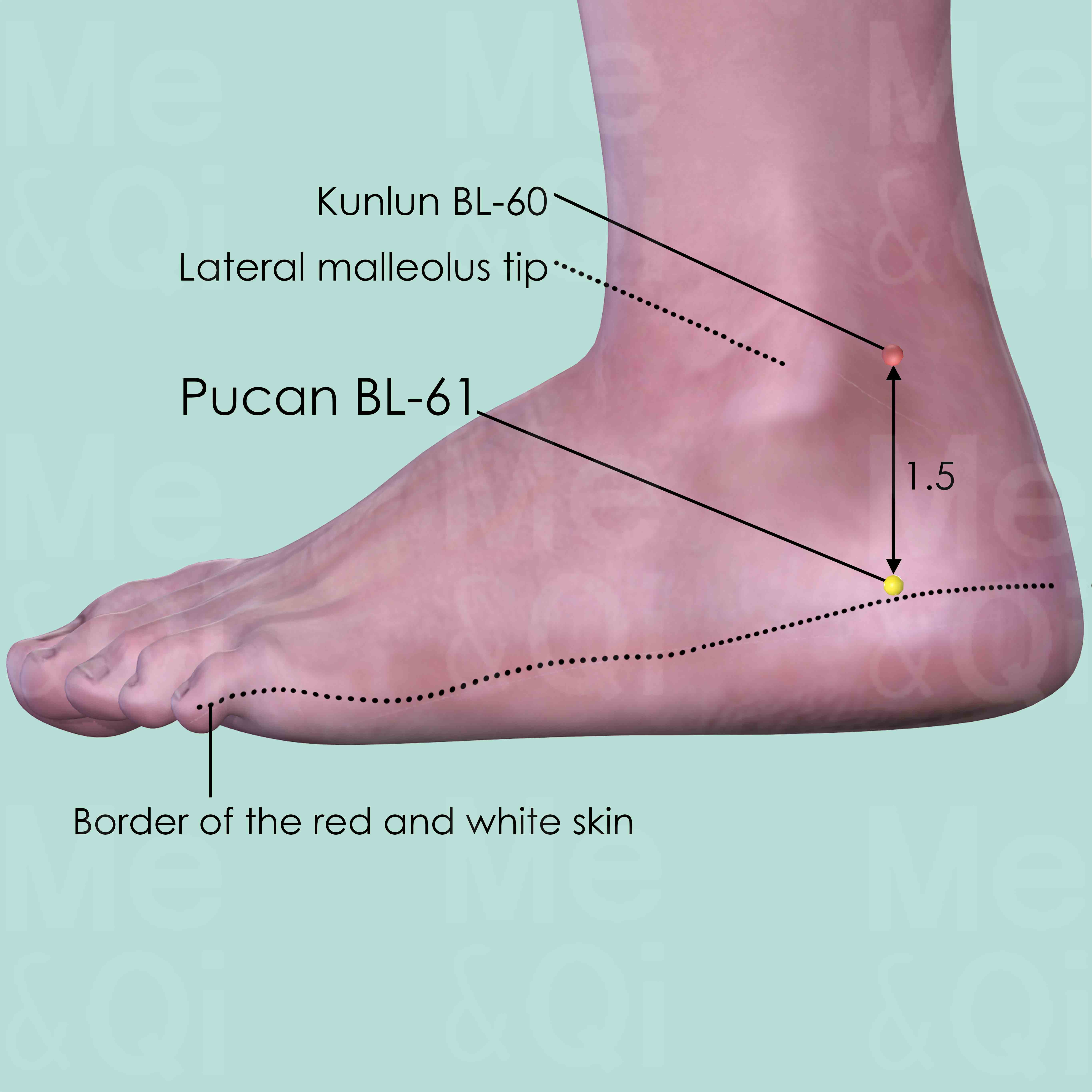
Pucan BL-61
Posterior and inferior to the external malleolus, directly below Kunlun BL-60, in the depression of the calcaneum at the junction of the red and white skin.
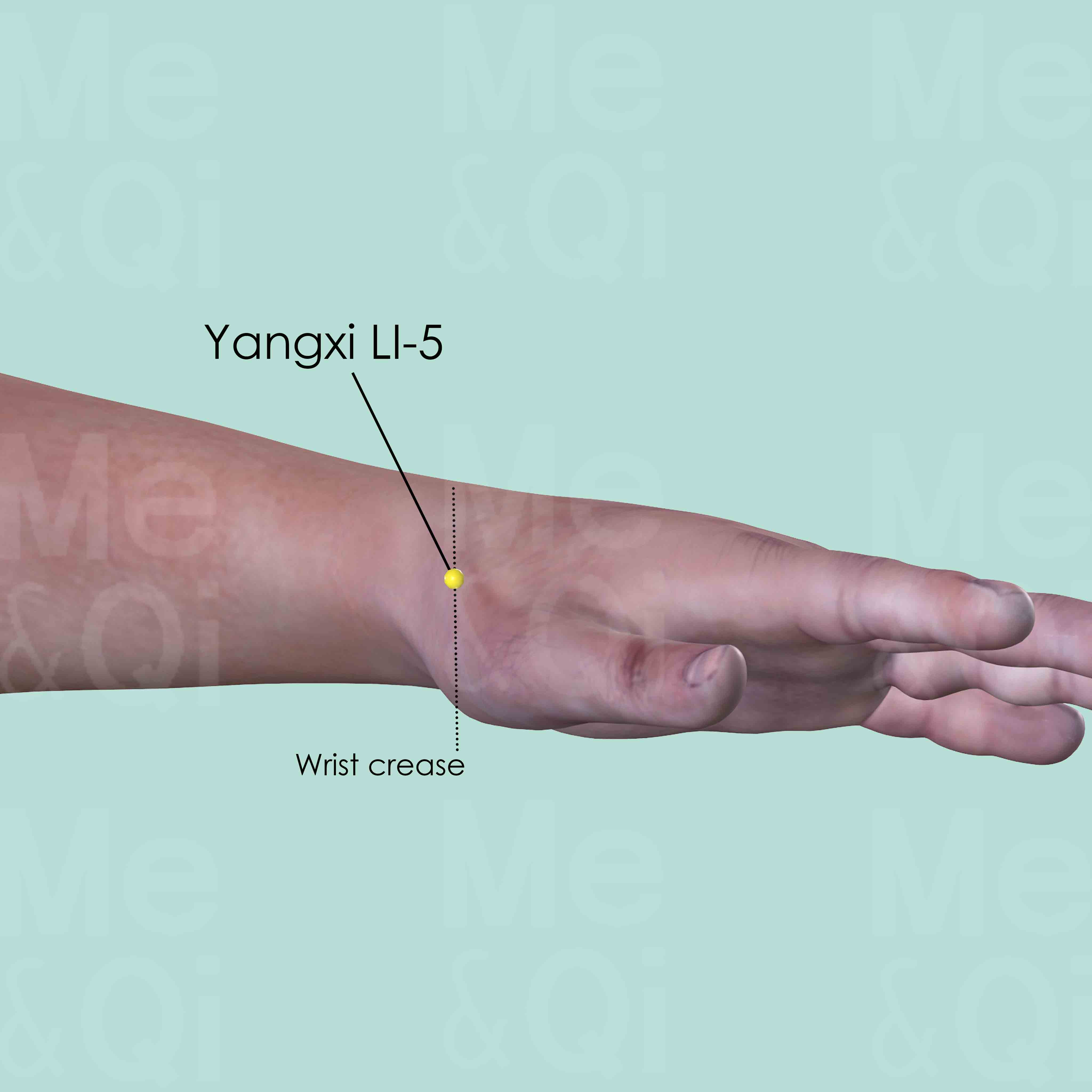
Yangxi LI-5
On the radial side of the wrist. When the thumb is tilted upward, it is in the depression on the wrist joint space (wrist crease) between the tendons of extensor pollicis longus and brevis muscles.
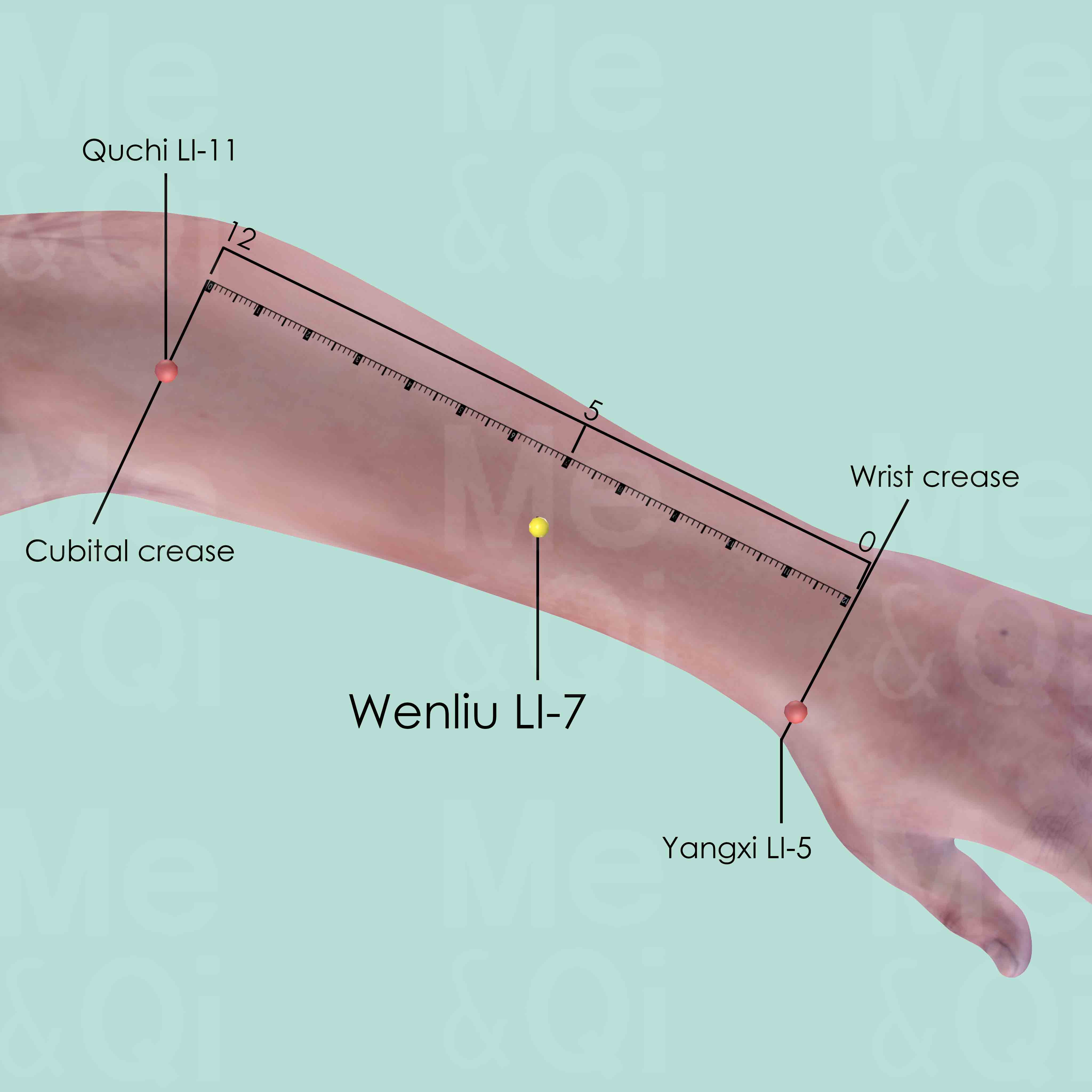
Wenliu LI-7
When a fist is made, with the ulnar side downward and elbow flexed, the point is 5 cun above Yangxi LI-5 at the wrist crease, 1 cun distal to the midpoint of the line joining Yangxi LI-5 and Quchi LI-11.
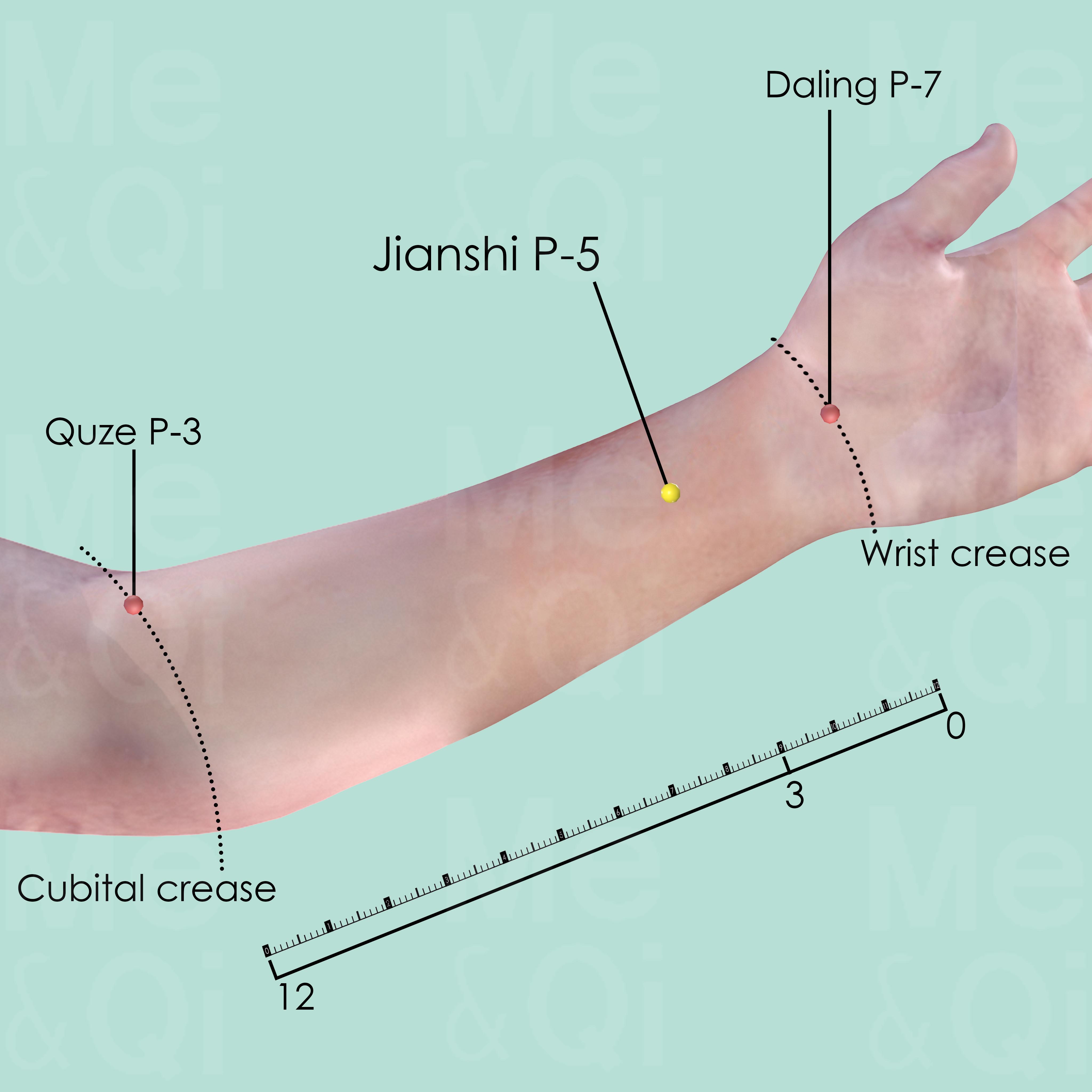
Jianshi P-5
3 cun above the transverse crease of the wrist, between the tendons of palmaris longus and flexor carpi radialis muscle.
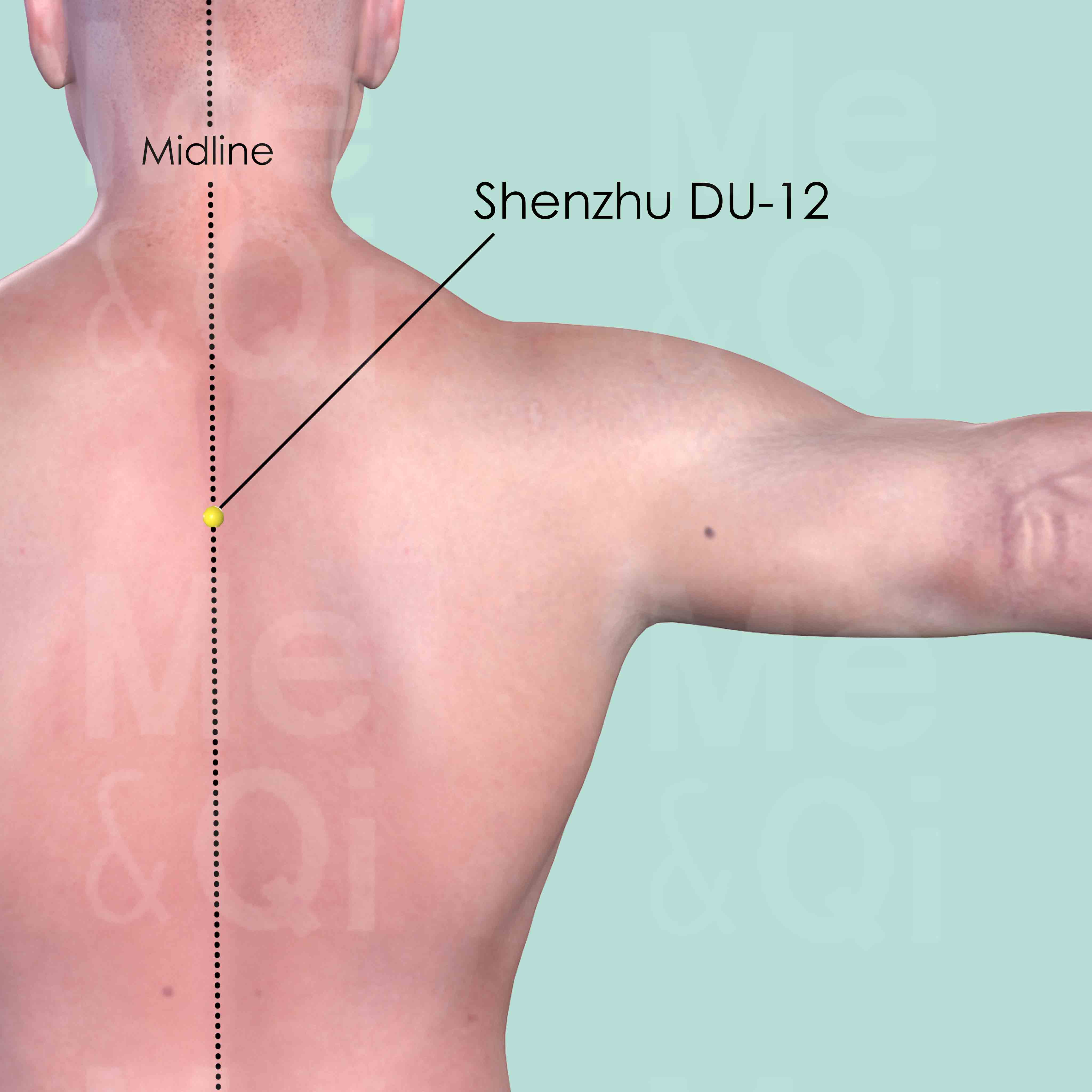
Shenzhu DU-12
On the back midline, in the depression below the spinous process of the 3th thoracic vertebra (T3).
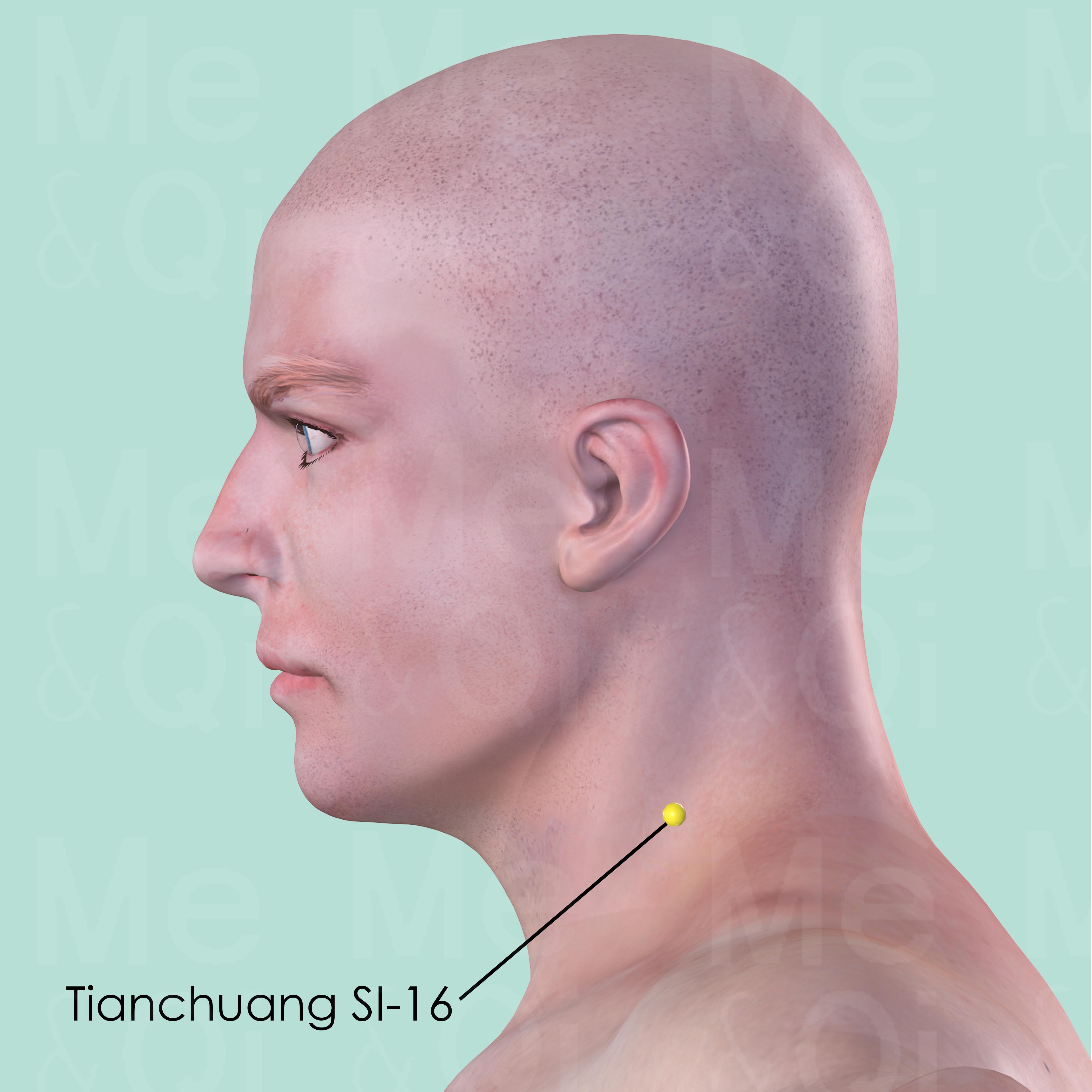
Tianchuang SI-16
In the lateral aspect of the neck, on the posterior border of sternocleidomastoid muscle, lever with the Adam's apple.
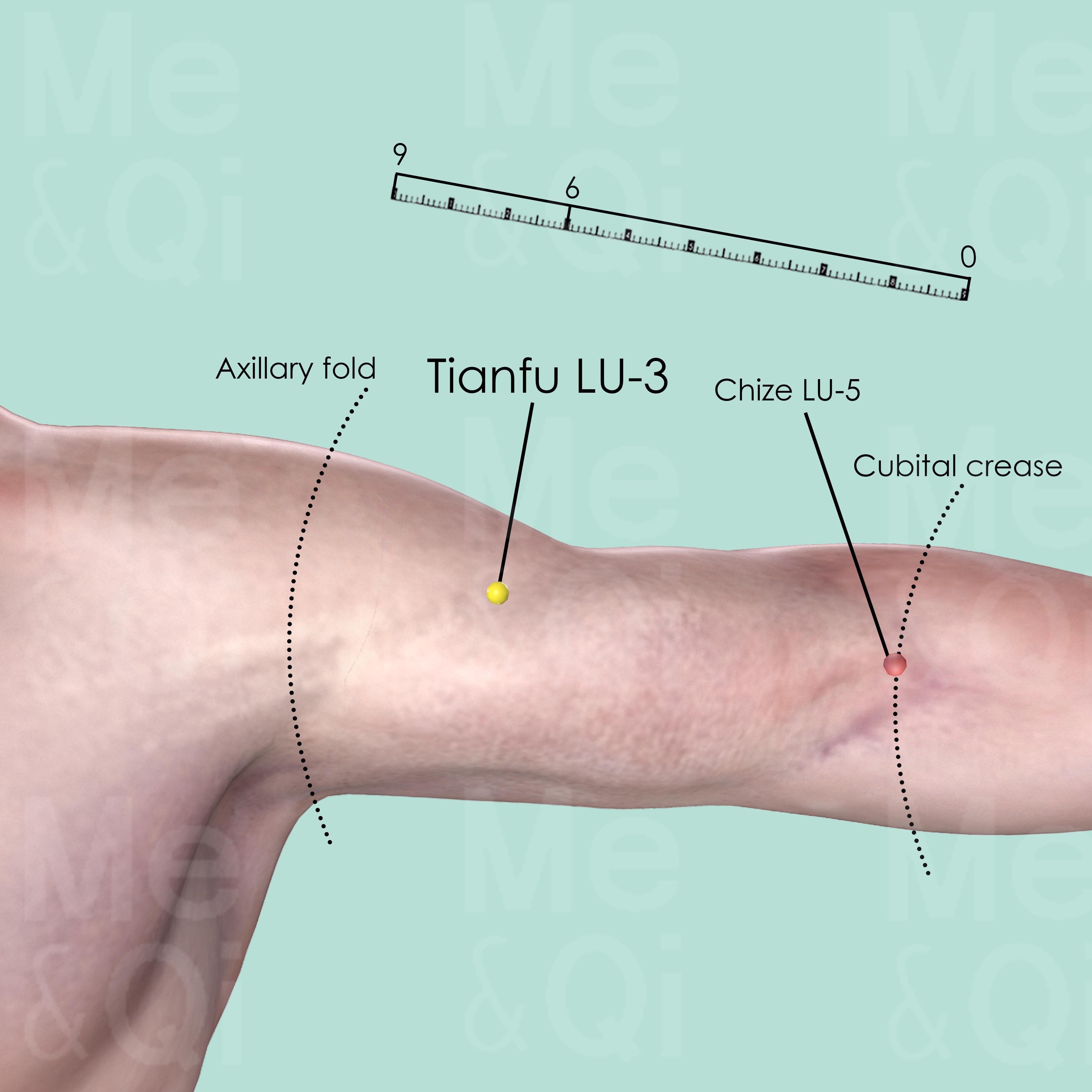
Tianfu LU-3
On the medial aspect of the upper arm, 3 cun below the end of the axillary fold and 6 cun above Chize LU-5, in the depression on the lateral border of biceps muscle.
